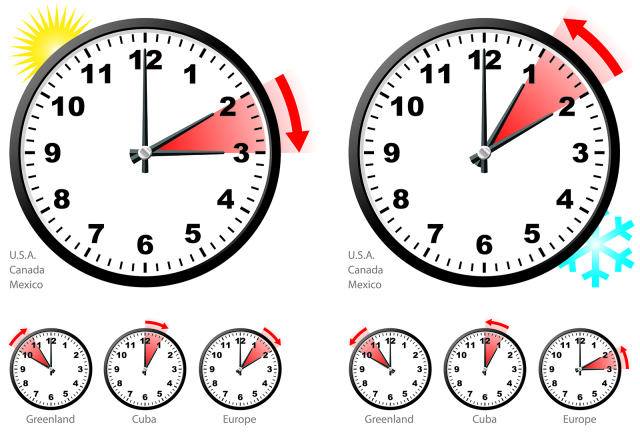Daylight saving time (DST) is the practice of advancing clocks during warmer months so that darkness falls later each day according to the clock. The typical implementation of DST is to set clocks forward by one hour in the spring ("spring forward") and set clocks back by one hour in autumn ("fall back") to return to standard time. In other words, there is one 23-hour day in late winter or early spring and one 25-hour day in the autumn.
George Hudson proposed the idea of daylight saving in 1895. The German Empire and Austria-Hungary organized the first nationwide implementation starting on April 30, 1916. Many countries have used it at various times since then, particularly since the 1970s energy crisis. DST is generally not observed near the equator, where sunrise and sunset times do not vary enough to justify it. Some countries observe it only in some regions; for example, parts of Australia observe it, while other parts do not. Only a minority of the world's population uses DST.
DST clock shifts sometimes complicate timekeeping and can disrupt travel, billing, record keeping, medical devices, heavy equipment, and sleep patterns. Computer software often adjusts clocks automatically, but policy changes by various jurisdictions of DST dates and timings may be confusing.
Industrialized societies usually follow a clock-based schedule for daily activities that do not change throughout the course of the year. The time of day that individuals begin and end work or school, and the coordination of mass transit, for example, usually remain constant year-round. In contrast, an agrarian society's daily routines for work and personal conduct are more likely governed by the length of daylight hours and by solar time, which change seasonally because of the Earth's axial tilt. North and south of the tropics daylight lasts longer in summer and shorter in winter, with the effect becoming greater the further one moves away from the tropics.

